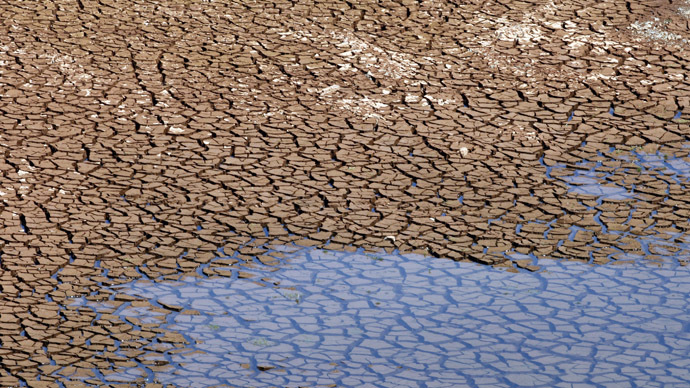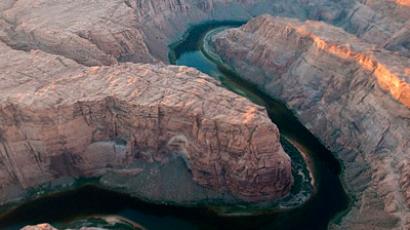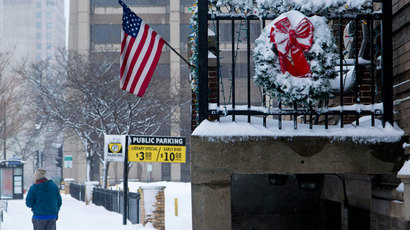Bureaucratic mess: 3,000 agencies leave California water system in disarray

While Californians try to counter one of the worst droughts to hit the state in a century, a well-structured and organized water management system appears to be anything but evident.
Although paleoclimatologists previously thought that the current dry-spell in the Golden State could be the severest one in 500 years, according to the Economist, experts have more recently downgraded that estimate to say the situation there is only among the worst of our lifetimes. Despite the seriousness of the drought, however, a new report reveals that the state has far from established any sort of system to regulate the agencies that supply Californians with water — and the result could be devastating.
Oversight with regards to those agencies is so slight, in fact, that journalists say a spokesperson for the office in charge or managing and protecting the state’s supply of water was unable to even acknowledge how many companies are involved in the convoluted equation.
On Friday this week, Reuters reporter Tim Reid explained that a state-sanctioned system is nowhere to be found in California when it comes down to regulating the companies that supply water, and the lack of oversight has certainly not helped the current situation: this week, the US Drought Monitor revealed that 100 percent of California is in the midst of “moderate” to “exceptional” drought, and more than three-quarters of the state is suffering from conditions considers “extreme” to “exceptional.”
Nevertheless, the state isn’t all too sure what to do, apparently.
“While state regulators supervise three companies that provide gas and electricity for most of California, drinking water is delivered through a vast network of agencies which collectively do billions of dollars of business, setting rates and handing out contracts with scant oversight,” Reid wrote.
When the Reuters journalist asked a spokesperson for the California Department of Water Resource to supply him with the number of agencies involved, he was offered only an estimate.
"We think the total number is about 3,000 but there is no definitive resting place for those numbers," he claims the water representative told him.
According to Reid’s report, Californians are starting to take notice. State Controller John Chiang is attempting to get a law signed that would require public water entities to file annual reports or face hefty fines, Reid wrote. Even if that bill advances, however, “no agency is responsible for reading the reports once filed,” he reported.
"The lack of transparency provides a breeding ground for unchecked spending, corruption and fiscal mismanagement," Chiang told him.
And Wes Strickland, a Texas-based attorney who specializes in water law, told Reid that these agencies “are at the forefront of the drought response” regardless.
On Thursday this week, Tom Evans — the director of the Metropolitan Water District of Southern California — wrote an op-ed for the San Francisco Gate urging residents on the northern end of the state to consider putting their resources together to manage water regionally and, hopefully as a result, more efficiently.
The Metropolitan Water District of Southern California, Evans wrote, built a massive reservoir there in 2000 with the backing of area residents, and has since signed contractors for underground storage sites as well. Now as the state is in the midst of a very serious drought, Evans wrote that others may want to consider doing the same.
“If water agencies and their customers in Northern California formed an agency like the Metropolitan Water District of Southern California, they could invest in similar large storage facilities,” he wrote. “It appears that we are in a weather cycle of very dry years and sporadic wet years. Storage facilities need to be available when the water is. Formation of a Metropolitan Water District of Northern California can make that happen.”














